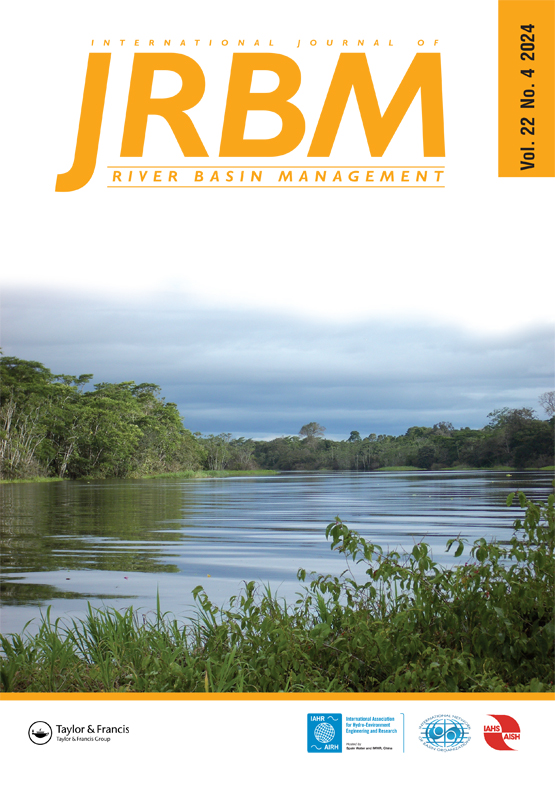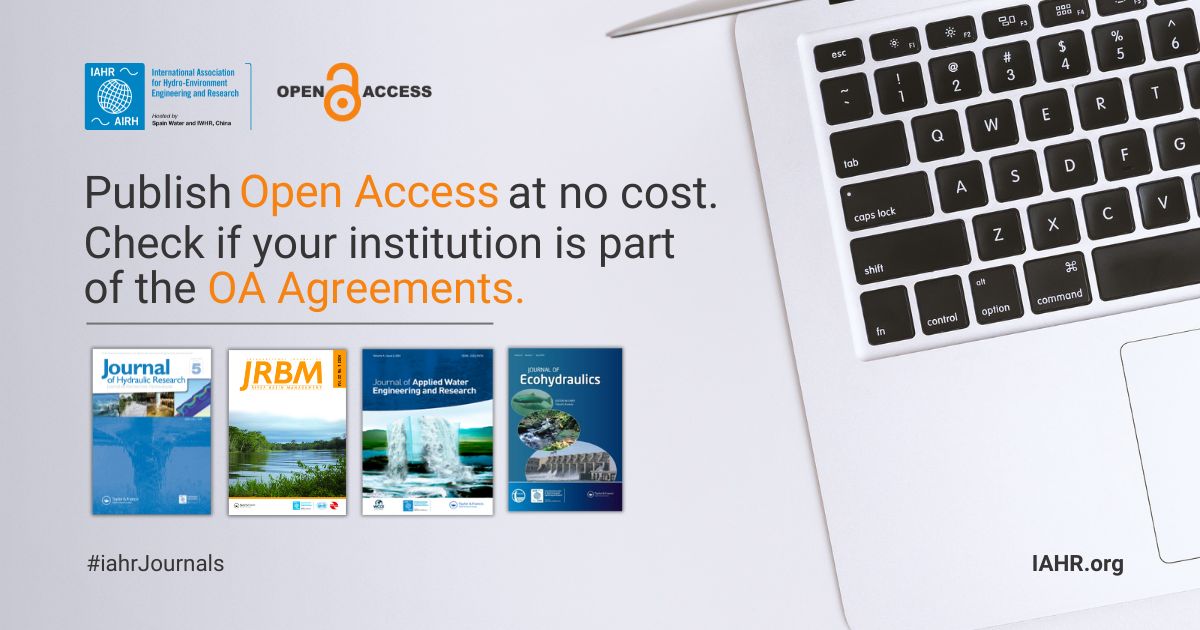Find out the actual state-of-art in the management of rivers and freshwater systems in the latest issue of JRBM!
 The Journal of River Basin Management (JRBM) plays a specific role in promoting a cross-sectorial approach encompassing all aspects of river and floodplain management, with a truly global perspective. The Journal is a response by the scientific and professional community to the World Water Vision and calls for an integrated approach to water resources management.
The Journal of River Basin Management (JRBM) plays a specific role in promoting a cross-sectorial approach encompassing all aspects of river and floodplain management, with a truly global perspective. The Journal is a response by the scientific and professional community to the World Water Vision and calls for an integrated approach to water resources management.
IAHR members can access the latest issue online for FREE through the IAHR website. Watch the tutorial.
Non IAHR members must access through Taylor and Francis website.
Overview
The fourth and last version for 2024 is now out. Issue 4 of JRBM Volume 22 collects high-quality articles that cover a wide range of basin-related issues, spanning from soil erosion to flood risk management in a changing climate.
The papers presented in this issue investigated changes in land use land cover in Ethiopian basins, correlating this to soil loss and sediment export, which might play a significant role in the management of hydraulic infrastructures like dams. Similar problems connected to sediment were analysed by looking at multiple spatial scales, considering how changes in hydrology might affect river morphology and bank erosion, as well as evaluating the effect of in-channel structures on local scour. Other articles tackled the combination of urbanization, climate change and water quality, also leveraging innovative techniques for determining trends in hydraulic parameters.
All articles collected here are worth reading, as they report and discuss the actual state-of-art in the management of rivers and freshwater systems from a variety of viewpoints, showing best practices to be applied worldwide and open research questions that should be addressed in the future.
Articles
Water quality decreased by urbanisation and Pinus based silviculture in Southern Brazil
Camila Schaefer Martins, Enzo Luigi Crisigiovanni, Paulo Costa de Oliveira Filho and Elynton Alves do Nascimento
Pages: 461-470 | DOI: 10.1080/15715124.2023.2187398Assessment of the effects of land use/cover changes on soil loss and sediment export in the Tul Watershed, Northwest Ethiopia using the RUSLE and InVEST models
Ermias Debie and Zemenu Awoke
Pages: 471-486 | DOI: 10.1080/15715124.2023.2187399Estimation of the local scour around the cylindrical pier over the gravel bed for a low coarseness ratio
Gaurav Misuriya, T. I. Eldho and B. S. Mazumder
Pages: 487-497 | DOI: 10.1080/15715124.2023.2187400Spatiotemporal analysis of 2020 monsoon floods and its impacts along selected reaches of the Padma River, Bangladesh
Aishia Fyruz Aishi, Khaled Hasan and Khandakar Aurib
Pages: 499-513 | DOI: 10.1080/15715124.2023.2187401A multi-criteria approach for improving streamflow prediction in a rapidly urbanizing data scarce catchment |

Anandharuban Panchanathan, Ali Torabi Haghighi and Mourad Oussalah
Pages: 515-528 | DOI: 10.1080/15715124.2023.2188597Streamflow prediction using machine learning models in selected rivers of Southern India
Rajat Kr Sharma, Sudhanshu Kumar, D. Padmalal and Arka Roy
Pages: 529-555 | DOI: 10.1080/15715124.2023.2196635Modeling the impact of changing in climatic variables on streamflow of Borkena River catchment, Awash Basin, Ethiopia
Kasye Shitu and Shimelis Berhanu
Pages: 557-577 | DOI: 10.1080/15715124.2023.2200005Residential flood risk in Metro Vancouver due to climate change using probability boxes
Hiva Viseh and David N. Bristow
Pages: 579-596 | DOI: 10.1080/15715124.2023.2200006Soil erosion estimation and risk assessment at watershed level: a case study of Neshe Dam Watershed in Blue Nile River basin, Ethiopia
Israel Tessema, Belay Simane and Kenatu Angassa
Pages: 597-610 | DOI: 10.1080/15715124.2023.2209324High-resolution assessment of riverbank erosion and stabilization techniques with associated water quality implications |

E. Hayes, S. Higgins, D. Mullan and J. Geris
Pages: 611-625 | DOI: 10.1080/15715124.2023.2214866A perspective of sustainable livelihood framework in analysis of sustainability of rural community livelihoods: evidence from Migori River watershed in Kenya
Stephen Balaka Opiyo, Godwin Opinde and Sammy Letema
Pages: 627-643 | DOI: 10.1080/15715124.2023.2216019
